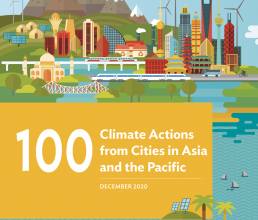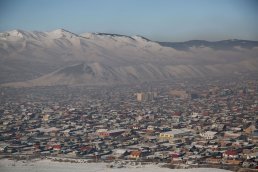First appeared in

Asian Development Bank
100 Climate Actions from Cities in Asia and the Pacific
The city’s Green Action Plan lays out 14 tangible project ideas and implementation steps aimed at addressing priority environmental pressures and improving the wellbeing of all citizens.
The city’s Green Action Plan lays out 14 tangible project ideas and implementation steps aimed at addressing priority environmental pressures and improving the wellbeing of all citizens.
Mongolia’s capital city currently finds itself in a somewhat paradoxical situation in terms of climate change vulnerabilities, as Ulaanbaatar is located in a water-scarce area but also regularly faces severe flooding. The city also suffers from poor air quality, primarily due to the use of coal-based heat and inefficient energy systems.
14
NEW POLICY ACTION AREAS TO IMPROVE THE ENVIRONMENT
Ulaanbaatar has chosen to prioritize the areas of energy, building efficiency, and land use in order to decrease pollution, reduce the carbon footprint from heating, and increase the quality of life for residents. To do so, the city has put forth a multi-sectoral development plan with a proposed cost of $712 million. It features a compendium of actions that address the unique environmental challenges faced by the city, with concrete targets and estimated costs included.
The 14 action areas include provisions for green housing and ecodistricts, the development of a mass transit system, nature-based solutions and sponge-city design, and improved waste management and sanitation systems.

The proposal is centered around the idea that climate change impacts and efforts to address them are intertwined with livelihood issues(photo by ADB).
The Challenge
Citizens in Ulaanbaatar are faced with high levels of air pollution, insufficient urban infrastructure, and poor water quality.
Co-Benefits
Economic Actions related to affordable green housing, utility development, and a circular economy will create a myriad of economic and employment opportunities.
Social The promotion of rainwater harvesting will allow households in unplanned Ger settlements to collect drinking water, thus becoming more self-sustainable.
Environment Nature-based solutions and green infrastructure provide important ecosystem services in the form of increased biodiversity and soil permeability.

